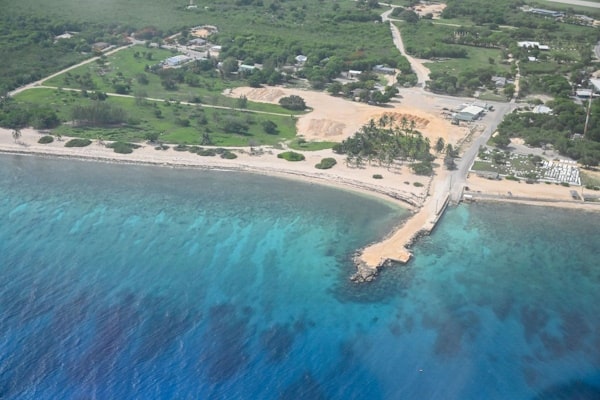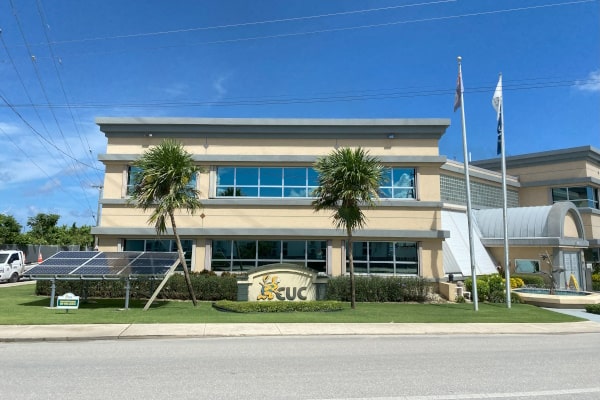CORE expanded as OfReg clears new rate
(CNS): OfReg has approved CUC’s new feed-in tariff rate for an additional five hundred kilowatts of capacity which was released under the of the Consumer Owned Renewable Energy programme (CORE), diverted from the Distributed Energy Resources (DER) programme to meet increasing demand from residential customers who want to use more of their own renewable sources of power, such as home solar panels and wind turbines. Participants in CORE will now get 17.5 cents per kilowatt hour for smaller systems of up to 5kW, and 15 cents for systems between 5-10 kW.
“The programme has been very successful in launching renewable energy at the consumer level,” said Gregg Anderson, Executive Director of Energy and Utilities at OfReg. “As more people move to renewable energy generation and help reduce the load on the T&D system, CUC’s overall fuel consumption reduces, which in turn reduces CO2, NOX and SOX emissions in line with the goals of the National Energy Policy.”
The CORE programme was established in 2011 to encourage homeowners and businesses to install renewable energy systems. The latest release of capacity was designed to meet the ongoing demand for CORE and to support the local solar PV industry. It was drawn from the capacity previously allocated to the DER programme, which is designed to accommodate bigger producers who are energy self-sufficient.
Malike Cummings, CEO at OfReg, pointed out the need for Cayman to expand the generation of alternative power. “Distributed Generation (DG) will undoubtedly continue to play a bigger role in the Islands’ quest to meet its NEP goals,” he said. “Not only does the Integrated Resource Plan project 70MW of generation to come from roof top solar systems by the year 2045, but the added benefit of improving system resiliency is characteristic of DG deployment, especially considering the Cayman Islands’ vulnerability to storms. After these types of natural disasters, solar and storage offer one of the best means of ensuring that consumers have power,” he added.
More information on the CORE programme is available on the CUC website.
Category: Business, Energy, Science & Nature, utilities





































You know this 500kw is all used now, so more the question is why Ofreg only got CUC to release a small amount, the demand is there but no one can get it. Ofreg and CUC need to work together not at a arms length apart
Because the current system limitation for intermittent solar is well-known and has been published for years. There is no more to release until mitigating resources have been brought online (storage) without causing negative impacts to the grid and losing cost efficiencies. What it also says is that the price for CORE should be lower, since clearly at even $0.175 and $0.15 there was an excess of demand.
No I disagree, what it’s saying is CUC is saying one thing and doing what it likes. Battery should of been in place 4 years ago if the planing was correct. There not. And no one knows how long before they are. CUC is making sure it’s putting it’s business in front of what the people and country are asking for. And Ofreg is a waste of time as it will not stand up to them.
Meanwhile, on the Brac…sigh. Maybe Mr. Dart can start real solar and wind opportunities now he owns Power & Light.
OfReg should only approve a charge based on actual avoided (diesel fuel) cost. This is easily calculated by CUC.
17 cents is is an example of reverse Robin hood effect.
Agree actual value is much lower. This is an example of reverse Robin hood effect.
OfReg should only approve a charge that changes based on actual avoided (diesel fuel) cost. This is easily calculated.
Why should the poor subsidise the rich who can afford Solar Energy installations?
Those who cannot afford to install the solar systems are being forced to pay the subsidy which shows up on bills under the line item “Renewable Energy”. My last bill had more than $4 under this heading.
None of those running for election as MP have talked about this.
Thank you OfReg and GOV. In a time of skyrocketing costs across most of our traditional daily spend, its nice to be getting something back on the ‘solar’ investment. Of course we’d like to get even more cents on the dollar but for those that missed the +30 cent wagon early on, this is still a win.
Sometimes we just have to say thank you!.
The article fails to mention that the rate is dropping from 26 cents to 15 for 5-10 kW. How does this incentivize homeowners and businesses to install renewable energy if CUC will get the government to continually drop the rates?!!!
Because you will still make your money back and then some? Just that now other people won’t have to continue to pay a massive premium for you to do so?
So you feel we should continue to subsidize those with roof top solar? That is pay them more than the fossil fuel production cost?
they should have based it on a percentage of the rate they charge at.
It would pass the risk of price fluctuation on to the solar generators, currently the risk is based on to everyone.
I support solar, and the government or CUC should be looking at energy storage solutions, where all the solar energy can be stored, then used in the evening
CUC and OfReg can stick it where the sun don’t shine!
It’s a shame that our Government doesn’t support solar but supports burning diesel!
Too little too late to reasonably meet long-term targets…
Based on the upvotes I’m glad you all agree. But don’t take my mere word for it: my graduate dissertation at a prestigious university was on this topic, particularly highlighting Cayman amongst global trends. Let’s just say the evidence is damning and I scored high enough for my dissertation to be published by the university. I’d say more but frankly I’m reluctant to share my findings beyond the university and close family. I think we all know why, hence the vagueness. Sad really, because my findings would surely do some good if they were instead welcomed by the powers that be. Hopefully I won’t regret posting this…
Yawn!
OFReg please do something about the high price of gasoline in Cayman Brac, gasoline is duty free here since 1 st January 2021, when the 12 1/2 cents duties was taken off making it duty free, A few weeks ago Gasoline price went up. 37 cents in the Brac. OFReg supposed to be for all the Caymanians islands. So do something for the Brac. The Brac gets the Gasoline by the same ship that Grand gets and for the same price. So why the price in the Brac higher than Grand, and Grand pays .75 cents duties and the Brac is duty free. Shame, shame, sad, sad, And it seems the Policiations don’t care
It’s almost certainly because of the volume of gasoline sold in Cayman Brac (and Little Cayman) compared to in Grand Cayman. I’m no fan of OfReg but this isn’t their fault.
If a gas station sells more gas, it needs less of a margin per gallon to make the money required to pay their bills and also make a profit. The Sister Islands have significantly smaller populations that don’t drive as much. Therefore, gasoline needs to be sold in those islands at a higher margin even though Grand Cayman has more stations.
The 2019 Compendium of Statistics estimated the Grand Cayman population as 67,676 and the Sister Islands as 2,238. Let’s assume 200 are in Little Cayman and 2,038 are in Cayman Brac. Using OfReg’s most recent prices for fuel and excluding marinas, there are 2 gas stations in Cayman Brac, 1 in Little Cayman and 20 in Grand Cayman. So we already have three times as many people per gas station in Grand Cayman compared with Cayman Brac. Then we need to factor in tourists (rental cars but also taxis and tour buses) and private companies and government agencies with vehicles that need gas, which Grand Cayman has more of as well. Then we also add to that the fact that Grand Cayman is more than five times larger than Cayman Brac in land mass and also has longer commute times and more traffic. It’s bleedingly obvious that the volume of gasoline purchased in Grand Cayman is much higher per person and that each gas station is serving more people. Grand Cayman therefore benefits from economies of scale at its gas stations, which don’t need as high of a margin to stay afloat.
I’m really tired of seeking this complaint because it’s basic economics AND you may be paying more for gas in Cayman Brac per gallon but you’re certainly not paying more for gas overall than the average person living in Grand Cayman. Especially the average person living in the Eastern Districts. My commute to work is longer than the entire length of Cayman Brac and it’s bumper to bumper traffic most of the time, which means my MPG suffers. I would bet any amount of money that I pay more per year for gasoline than you do. Why are you complaining that you pay more per gallon than I do?
9;19 am, we not complain that we pay more than you pay for gasoline,we just complaining about the high prices here Brac, we just saying that the price should not be more , using Grand only for reference. We Understand the profit is like $1.06 per gallon more here, being duty free and the difference in prices.Yes the stations don’t sell as much as stations in Grand, its smaller business, then they have less staff and lower Bill’s for the pumps are not running as much, etc .the station here sells like 35,000 plus gallons per month, thats good money with less overhead. We only saying the stations in Brac are making bigger profits than those in Grand do. WE ARE NOT COMPLAINING ABOUT YOU PAYING LESS IN GRAND, WE HAPPY THAT YOU ALL ARE PAYING LESS, we would be happy if the prices in Grand was lower, we are only complaining about the prices here Brac is too high. So please understand we only complaining about the Gas stations prices here. Take care my friends.
Simple solution , don’t buy it
12:07 pm. Why don’t you walk everywhere you go ? Especially to the store and drag hone your groceries
Buy electric. Problem solved.
Where did you say you were?
17 cents is a huge drop from the 28 cents where it was before. CUC gets away with anything and OfReg is useless again. Think of all the CUC bills that could be paid for the poor people of Cayman with all those fat Ofteg salaries.
17 cents is still higher than the actual value. You do realize this is effectively a transfer payment from all everyone paying bills to only those people who can afford to put in personal solar (and inherently to the solar installers’ bottom lines)?
The fact that CREA’s statement (made in response to this article on Facebook and in the Compass) indicates the whole capacity is expected to still be utilized at these rates should tell you everything you need to know about what that meant for the previous prices…
Fuel needs to be included in the value and once you do that then they aren’t paying much for solar.
Fuel is the comparative opportunity cost. The net value would effectively be avoided opportunity cost of fossil fuel generation (currently about 10¢ when including duty), plus some valuation of small scale solar, minus some valuation of utility scale solar (since that’s the alternative version of solar). The difference between that number and 17.5¢ (or 15¢ for systems between 5-10kW) is the subsidy being paid over the true total value of the actual energy AND the purported externalities.